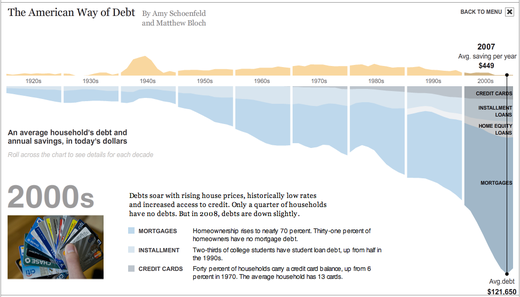News Home
Home - Index - News - Krisen 1992 - EMU - Economics - Cataclysm - Wall Street Bubbles - US Dollar - Houseprices
US Savings rate

en framtidstro som gör att man har större benägenhet att skuldsätta sig än européer.
Olle Wästbergs nyhetsbrev, augusti 2008
How U.S. banks sold home equity loans
International Herald Tribune, August 15, 2008
Det finns en optimism i den amerikanska kulturen, en framtidstro som gör att
man har större benägenhet att skuldsätta sig än européer.
Olle Wästbergs nyhetsbrev, augusti 2008

Text of article at The Big Picture with link to New York Times chart
Olle Wästberg:
"En översiktartikel om den amerikanska ekonomin som är en månad gammal, men
tyvärr mycket aktuell finns här:
http://tinyurl.com/5tutxh"
RE: Den leder till New York Times (med en liten snutt om "Sweden, 1991"
US Savings rate
A long wave of credit stimulation has been allowed to obscure the underlying problem of capital accumulation in the United States.
We are paying a price, but not solving the problem.
American Thinker 4/8 2008
The political class simply cannot be trusted to provide solutions. They are too interested in retaining power for the sake of power.
In a recent market commentary, Bill Gross called credit the mother's milk of capitalism.
That sentiment, echoed by our politicians and policy makers, is the source of our problems.
It is not credit but capital that is the lifeblood of capitalism and the US doesn't accumulate enough capital to support the growth to which we've become accustomed.
For years we've saved too little and spent too much. The difference to date has been provided by foreigners such as the Chinese who now own over $1 trillion of US debt and Middle Easterners who own even more.
Large financial institutions were encouraged to take on too much leverage and take too many risks by a Federal Reserve that held interest rates at artificially low levels for far too long.
The collapse of savings has been one of the most striking phenomena of the US economy in the 1990s. In 1993, the savings rate was just below 6 per cent, historically a figure that was already quite low.
But since then it has declined steadily every year to the current level of just below zero.
Gerard Baker December 14 1998